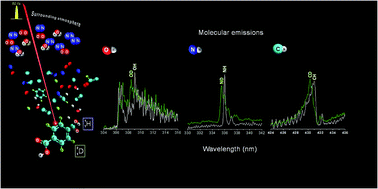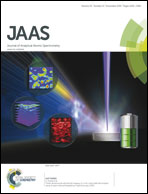Exploring the formation routes of diatomic hydrogenated radicals using femtosecond laser-induced breakdown spectroscopy of deuterated molecular solids
Abstract
In recent years, laser-induced breakdown spectroscopy (LIBS) has expanded beyond multielemental analysis capability by exploring molecular solids and optical emissions from diatomic radicals. Despite many efforts to this end, the greatest emphasis has been placed on the study of the dynamics and the optical and temporal behavior of CN and C2 emissions in order to elucidate the main chemical reactions occurring in the plasma. Other diatomic species, whose emission bands also appear in the visible and near-ultraviolet regions of the LIBS spectrum, remain virtually unexplored. This research focuses, for the first time, on elucidating the formation pathways of CH, NH, and OH radicals in femtosecond laser-produced plasmas of molecular solids. As the origin of diatomic species is not easily traceable to a single formation route due to the occurrence of primary and secondary processes within the plasma plume, isotopic labeling of some molecules has been used as a diagnostic tool. Deuterated isotopologues of urea, terephthalic acid and anthracene have been evaluated. The dominant routes have been identified through a comparison of the observed isotopic patterns. The findings reveal the direct release of native molecular bonds as a significant source that populates femtosecond laser-produced plasmas with NH radicals. Additional reactions of native hydrogen from molecules and atmospheric nitrogen also contribute to form such species. Oxygen from the atmosphere competes with nitrogen in these reactions to populate plasmas with OH radicals. Alternatively, the direct connection between C2 and CH emissions verify that this radical derives from diatomic carbon fragments as precursors. These new findings entail a further step towards the use of molecular emissions as diagnostic tools in the analytical applications of laser-induced plasmas of organic compounds.


 Please wait while we load your content...
Please wait while we load your content...